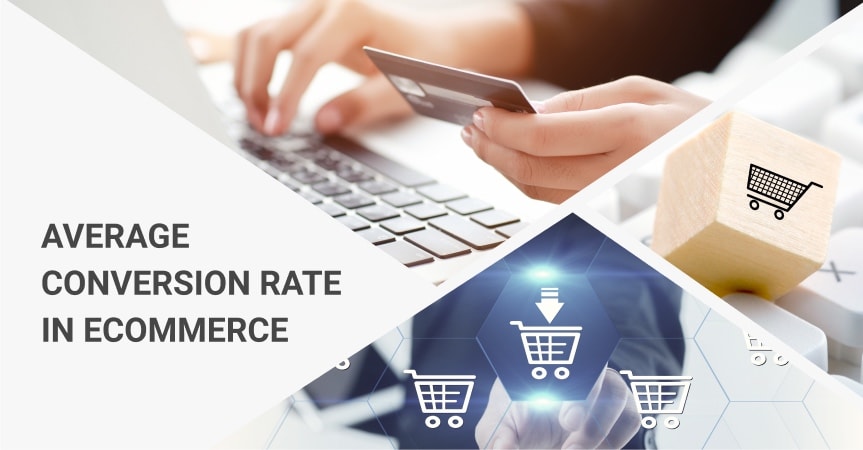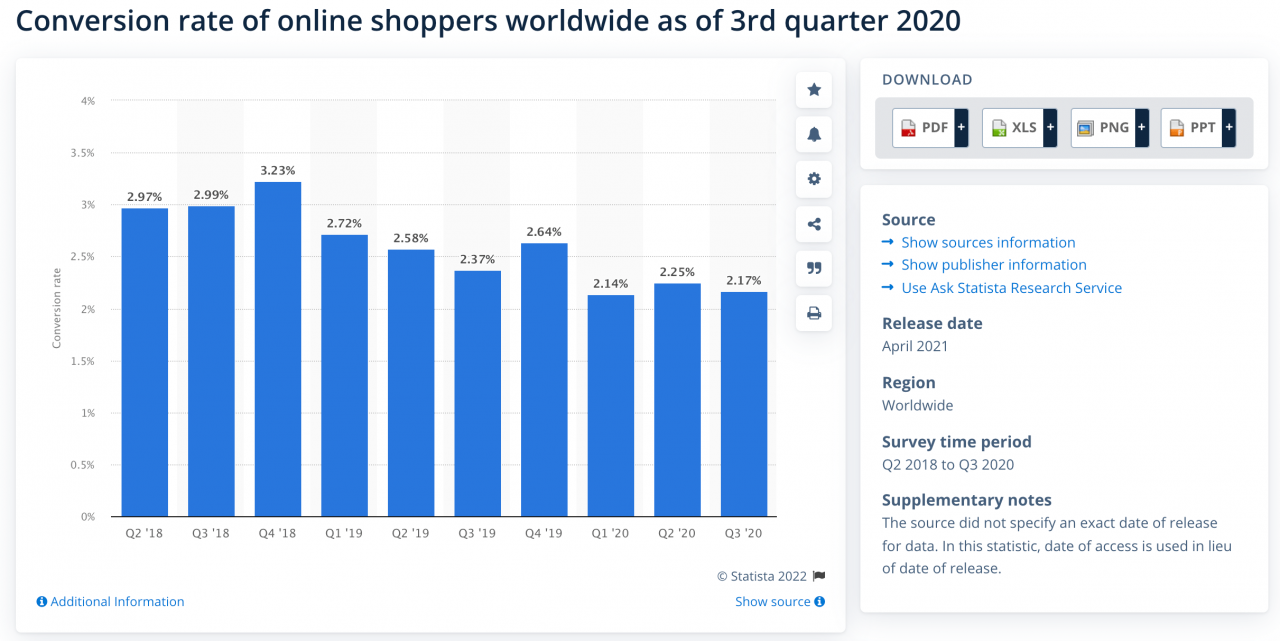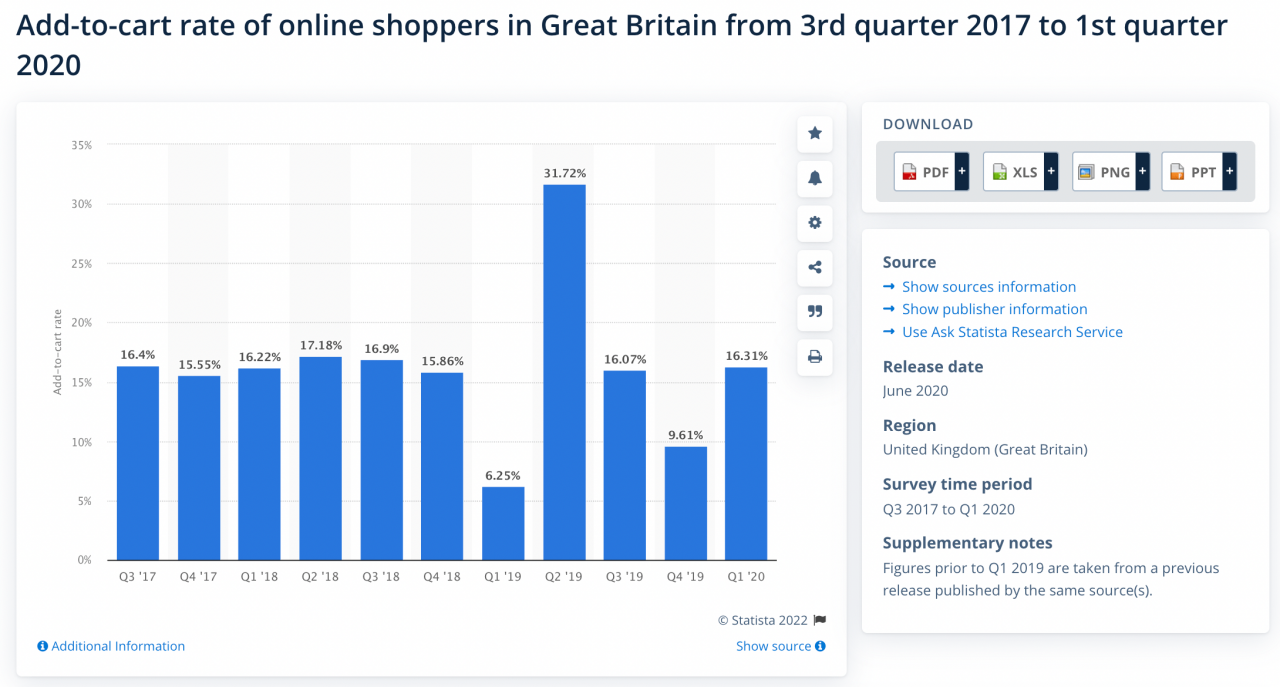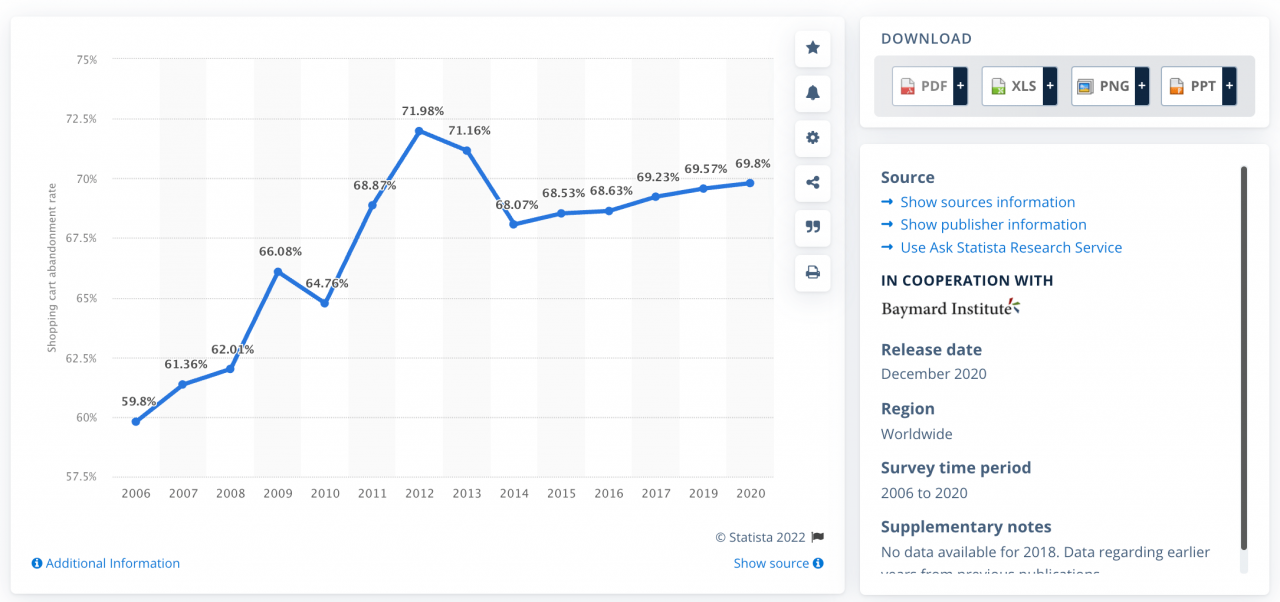How To Increase An Average Conversion Rate In Ecommerce?

What’s the average conversion rate in ecommerce? Which parameters to pay attention to when running an online store? How to boost a website conversion rate? This is what we are going to talk about right now!
When running an online store, there are several parameters that can help you track the results of your store’s performance. One of the most important is, definitely, the conversion rate.
Those business owners who want to make the most of their online stores pay attention to this indicator and look for ways to improve it. In fact, they are absolutely right.
But how to assess the average conversion rate of your online store? What is the average ecommerce conversion rate? And how to boost the average conversion rate of your ecommerce business?
This is exactly what we are going to talk about in this article. So don’t miss a piece of exceptionally valuable information. We are starting right now!
What is the average conversion rate in ecommerce?
Many people are eager to know what a conversion rate is. So let’s figure it out!
In ecommerce, the conversion rate is a proportion of the total number of your website visitors to the number of those who meet targets (subscribe, add to cart, make a purchase, etc).
According to this definition, the conversion rate is the very indicator you can use to easily track the performance of your online store, realize how to adjust your business strategy, etc. But how to use it correctly?
When people start business journeys, most of them ask what a good conversion rate is. But that’s not as simple. Actually, a good conversion rate can vary depending on the scope of activities.
If we are talking about online stores, the average conversion rate is about 2-5% and it depends on the country you’re dealing with.
However, please note that the average conversion rate in ecommerce can provide you with limited data on your business performance.
You will be able to look at the tip of the iceberg, meanwhile, it can’t get you a deep understanding of what’s going on with your online store. What’s more, if there is a low conversion rate of your business, you will not be able to define the weak point and take measures in order to improve this indicator.
Well, would you like to learn more about the parameters you should definitely pay attention to? Is it interesting to you how to boost the conversion rate of your business? If so, stay tuned!
What is the mean conversion rate for ecommerce websites
There are significant differences in conversion rates across sectors, countries, devices, seasons, marketing strategies, and more.
It’s important to develop your key ecommerce performance indicators (KPIs) as well as to take into account market-specific nuances while analyzing the average ecommerce conversion rate of your industry.
If you’re comparing the conversion rate of your company with competitors, be mindful that no two businesses can have the same conversion rate. Several factors come into play – your targeted audience, geographic areas of business, products or services sold, penetration in the market, and more.
Conversion rate by various factors
Country
It can be particularly useful to come up with country-specific KPIs for segments of your customer base. It might also be necessary to amend KPIs based on industry benchmarks if you’re catering to a market with a lower overall conversion rate.
- Ireland – 1.8%
- United Kingdom – 1.8%
- Spain 1.5 -%
- Italy – 1.2%
- Portugal – 1.3%
- Germany – 1.4%
- Netherlands – 1.4%
- Belgium – 1.2%
- Sweden – 1.3%
- Norway – 1.3%
- Denmark – 1.4%
- United States – 1.4%
Knowing the country’s conversion rate serves well, especially when you’re planning to expand your market. This kind of information helps make necessary changes to your KPIs and prepare winning business strategies for sure wins.
Industry
Here’s the average conversion rate of various ecommerce industries:
- Agricultural suppliers – 1.41%
- Arts and crafts – 4.01%
- Baby & child – 0.71%
- Cars & motorcycles – 1.36%
- Electrical & commercial equipment – 2.70%
- Fashion clothing & accessories – 1.41%
- Food & drink – 0.9%
- Health & wellbeing – 2.02%
- Home accessories – 1.45%
- Kitchen & home appliances – 1.61%
- Pet care – 2.51%
Channel
Besides the industry and country-specific conversion rates, differentiating the conversions based on traffic source is important. These figures help define channel-specific goals while helping to identify the best-performing and most promising traffic sources.
- Direct – 2.2%
- Email – 5.3%
- Organic – 2.1%
- Facebook – 0.9%
- AdWords – 1.4%
- Referral – 5.4%
- Social – 0.7%
Device
What you eventually set as an ecommerce conversion rate benchmark also depends on your products’ market and your target audience’s preferred device.
For instance:
The average desktop conversion rate is about 2.1% against 3.32 % on tablets.
In the US, the average conversion rate for ecommerce shoppers on their mobile phones is 2.2 percent, while that for desktop is higher at 3.7 percent.
Which parameters should you pay attention to?
We have already found out that the average conversion rate of your online store can reflect how efficiently it works. However, if this parameter is low, or you are looking for ways to improve it, you should assess several parameters of your ecommerce business.
Well, now we are going to talk about the most important parameters for you as an online store owner. So do you want to benefit from your business as much as you can? Then, this is exactly what you need!
Purchase rate
The purchase rate is a parameter that indicates the number of buyers to visitors.
In practice, this is one of the basic but most important metrics you should pay attention to. Due to the purchase rate, you can understand what percentage of people decide to buy something from you.
The conversion rate of online shoppers worldwide is 2.17 as of the third quarter of 2020.
What should you know about the purchase rate? One of the most interesting and significant facts for you as a business owner is that there is a correlation between time on a website and purchases. As a rule, the longer your site visitors surf your website, the lower probability of making a purchase is.
What does this mean? If your website has a user-friendly interface, transparent offers, and so on, internet users are not supposed to think twice, but make an immediate purchase. But in case of some challenges when completing an order in your store or finding necessary information, they are likely to leave the website.
How to get a higher purchase rate of your online store?
- Provide a user-friendly design
- Make detailed single product pages
- Reduce the number of clicks to complete the purchase
Add-to-cart rate
Add-to-cart rate is a parameter that indicates the percentage of visitors that clicked on the ‘Add to cart’ button.
It’s important for you to note that the add-to-cart rate doesn’t reflect the percentage of people who buy something from you, but only those who add something to their shopping cart. Consequently, the main goal of this metric is to show an intent to buy a product from your online store. And, in most cases, this indicator is a lot higher than the average purchase rate.
The average add-to-cart rate in the United Kingdom is about 16%.
So we believe it’s not necessary to tell you that the add-to-cart rate has a direct impact on the purchase one? The more people add something to their shopping cart, the more potential customers finally complete the purchase.
And since this metric is essential for your business, let’s figure out how to boost the add-to-cart rate.
- Create urgent single-product pages
- Highlight the ‘Add to cart’ button
- Avoid all the website elements that can distract a visitor from making a purchase
Abandonment cart rate
The abandonment cart rate is an indicator that tells you how many people add something to the shopping cart, but later abandon the idea to complete the purchase.
In 2020, the abandonment cart rate was about 69%.
So how to work with this metric? In case of the low abandonment cart rate, it’s necessary to understand at what stage website visitors leave your online store. In fact, there can be lots of them.
For example, it can seem to the visitors that it’s quite challenging to complete the purchase in your store, or your checkout does not inspire confidence, etc.
Then, how to increase the abandonment cart rate?
- Provide your potential customers with a simple and short process of completing the purchase
- Place trust banners at the checkout
- Use timers that create a sense of urgency
The average conversion rate in ecommerce: final thoughts
As a business owner, if you want to succeed with your online store, you should definitely track its performance.
First of all, it’s a good idea to check the purchase conversion rate. It can provide you with basic data on how efficient your online store is.
However, if this metric doesn’t seem high enough to you, it’s high time to further analyze your store activity and look at more specific parameters: add-to-cart rate, abandonment cart rate, etc. According to them, it will be a lot easier for you to find a weak point and take measures in order to make the most of your online store.
Now you know well what the average conversion rate in ecommerce is and which particular metrics to pay attention to when assessing your business performance. And if you don’t have your own profitable business yet, it’s high time to start your dropshipping journey with AliDropship!

tutorials and special offers from AliDropship

















